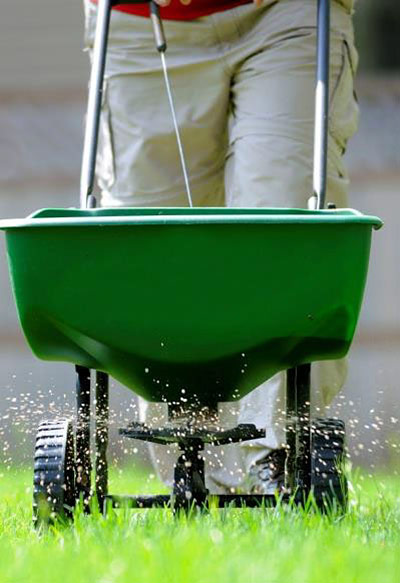Fertilizing
To keep your lawn green, growing and looking its best, a consistent program of fertilization is essential. Regular fertilization will lead to a thicker, healthier lawn that reduces erosion, filters pollutants, provides natural cooling, and cleans the air. Plus, your lawn will be less likely to suffer from weed, insect and disease problems when it is fertilized on a regular basis. Best of all, your lawn will need less water when it gets the nutrients it needs throughout the year.
Application #1: Early Spring
Fertilizer at this time is crucial for an early spring green-up. These are also the months when we can most effectively control crabgrass and foxtail. You must act quickly, though, to ensure the greatest percentage of control.

Application #2: Late Spring
Fertilization along with broadleaf weed control will be applied at this time. Please remember we can only control those broadleaf weeds showing at the time of application. This is a critical time for insect activity to start. Insecticides will be added as needed to control surface feeding insects.
Application #3: Summer
Much more difficult weeds come in at this time. Heavier strength treatments will be included for broadleaf weeds. Hot weather brings out the grubs and other pests. Insecticides are applied as needed to control them. Fertilizer is applied at this time to sustain your lawn through the high stress of summer heat.
Application #4: Late Summer
Fertilizers are applied to prepare your lawn for early fall. Herbicides and insecticides are applied as needed for increased control of weeds and surface damaging insects.
Application #5: Fall/Winter
Fertilizer will be used to help prevent winter stress and promote healthy root development. Your lawn will also green-up sooner next spring.



